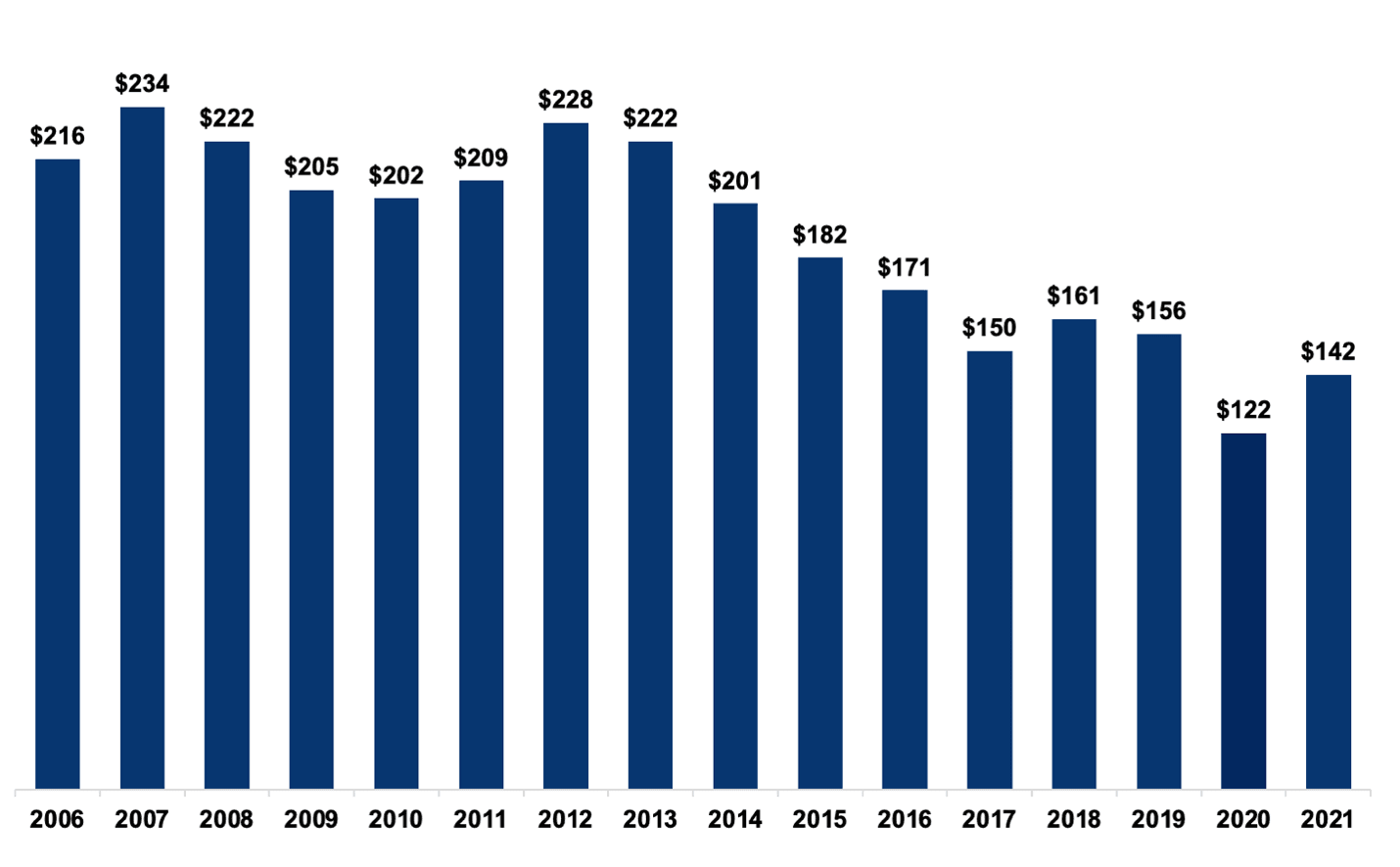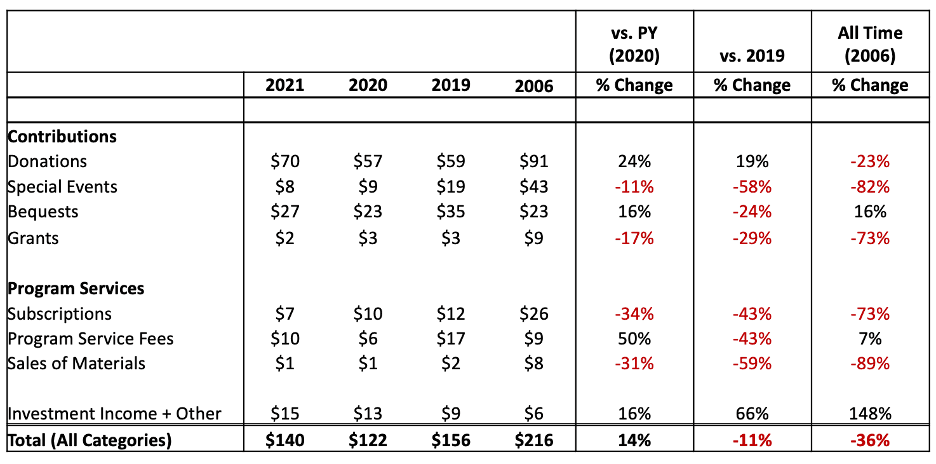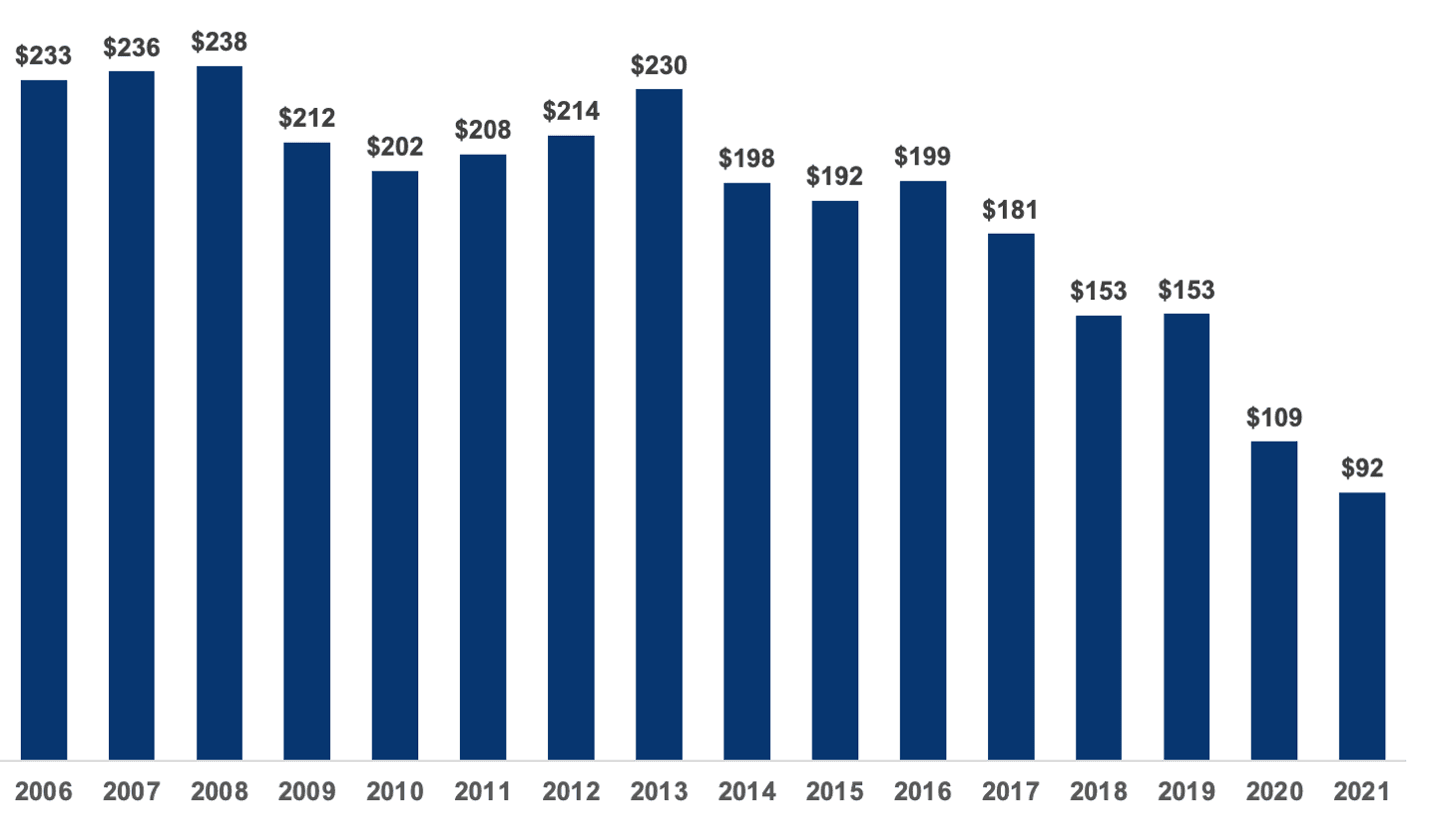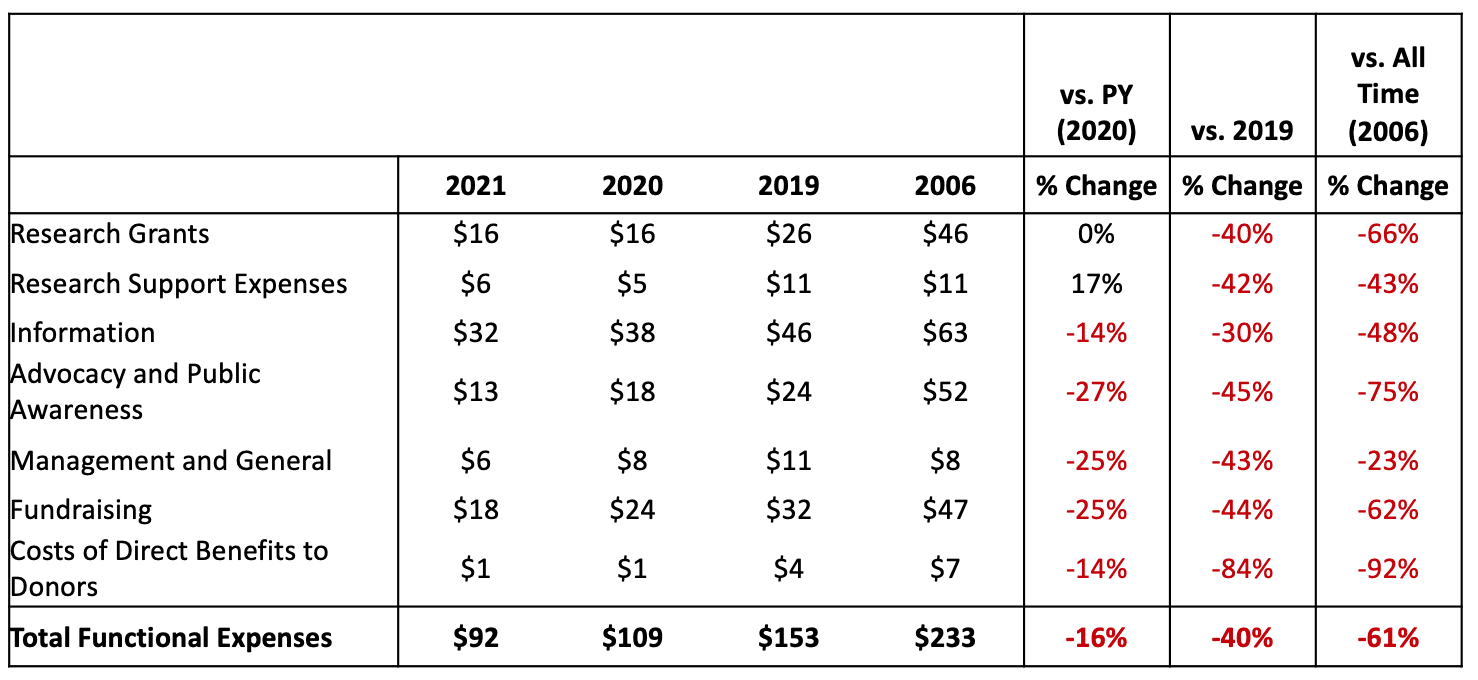June 16, 2022
This report will analyze the American Diabetes Association (ADA) Fiscal Year 2021 Audited Financial Statements, which cover a period from January 1, 2021 to December 31, 2021. The 2021 financials give a snapshot of an organization undergoing profound transitions on several fronts. During this Fiscal Year, the ADA named a new CEO – who was promoted from interim to full-time CEO early in 2022, restructured its board of directors, and managed the second year of its response to COVID-19 by making challenging cuts to its expenses across the board.
ADA Revenue
Over the past 16 years that ADA’s financials are publically available, revenue has been declining steadily, down -34% since FY 2006 (See Chart 1). This trend was exasperated by COVID in FY 2020. While there was some recovery between FY 2020 and FY 2021, the organization is still well behind its revenue in the mid-2000s. It’s possible that this steady decrease in revenue points to a decrease in the relevance of the organization.
Chart 1: ADA Revenue (in Millions), 2006-2021

Looking closely at the ADA’s sources of revenue, donations in FY 2021 bounced back to a level that was higher than they were in FY 2019, the year before COVID. However, special fundraising events (walks, rides, galas, etc.) continue to be depressed.
Notably, in 2021, the ADA also applied for and received a payout from the payroll protection program. The program gave the ADA a $10 million “loan” that was forgiven and marked as revenue, which is listed as "Other" revenue under "Program Services" in Chart 2.
Chart 2: ADA Revenue Sources vs. 2006 (All-Time), 2019 (Pre-COVID), & 2020 (Prior Year) (in Millions)

ADA Expenses
The ADA responded to COVID by dramatically cutting its operating budget. In 2021, the organization spent -60% less than it did in 2006, -55% less than 2011 and, perhaps most importantly, -40% less than 2019, the year before COVID. $61 million was cut from the budget between 2019 and 2021. See Chart 3.
Chart 3: ADA Expenses (in Millions), 2006-2021

Nearly every expense category was cut between -30% and -45% from 2019 to 2021 – across the board. Research grants, notably, dropped by -42% from $26 million to $16 million in this two-year stretch. Compared to 2006, research grant spending is down -66%. See Chart 4.
Chart 4: ADA Expenses vs. 2006 (All Time), 2019 (Pre-COVID), & 2020 (Prior Year) (in Millions)

In FY 2021, the ADA did not share, as it had in prior years, the amount of research grant funding dedicated to type 1 diabetes vs. type 2 diabetes vs. other forms of diabetes. In an email to the JDCA, a spokesperson for the ADA acknowledged "that it would be useful to provide (this) information going forward." We will update our audience if the organization decides to make this information public.
Conclusions
FY 2021 was challenged by COVID and many other macroeconomic factors. The ADA responded to this adversity by cutting expenses and building up a notable cash and investment reserve position on the balance sheet -- $41 million in cash and $50 million in investments, presumably mostly short-term. Given the massive reduction in expenses and the buildup of cash, the ADA has a prime opportunity to reinvent itself as its restructured board of directors sets priorities for its new CEO.
Based on our surveys of the type 1 diabetes donor community, the ADA would be well served if it were to use its current cash surplus to fund a Practical Cure research initiative. While there are relatively few people with T1D compared to T2D, these people generate half a billion dollars a year in donations largely meant for a single purpose: research to find a cure for T1D. A Practical Cure initiative at the ADA could change the fate of the organization, as well as the direction of diabetes research funding.
